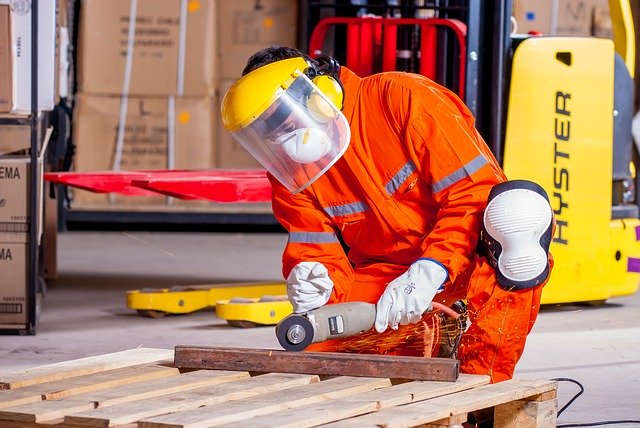Personal protective equipment came to widespread public attention during the Covid-19 pandemic. But the reality is that PPE is about more than facemasks, it can protect against a far broader range of hazards than airborne pathogens.
In many cases, the right PPE can make a difference in guarding against workplace risk. But this sort of equipment is only effective if it’s actually being worn. As such, employers might put in place rules which mandate the use of certain items of PPE.
So, what potential consequences might be suffered by businesses which don’t insist on PPE use?
Physical harm to workers
Certain kinds of PPE will directly protect the worker in question against physical risks. You might think of hard hats on construction sites, which prevent direct trauma to a worker’s head. In sites where heavy objects might fall from raised platforms, this can easily make the difference between life and death.
We might also think of PPE that makes workers more visible to one another, even in less-than-ideal conditions. Hi-vis clothing, for this reason, should be mandated for construction and road workers.
Financial consequences
Under the Health and Safety at Work Act 1974, employers have a duty to provide a safe working environment to employees. This means access to the appropriate PPE, and having the knowledge necessary to use it properly. If you don’t meet this standard, then you could face fines and other penalties, which might directly impact your business’s bottom line.
What’s more, there is reputational damage to consider. If your business develops a reputation for being cavalier when it comes to safety, then it might have difficulty bringing in the talent it needs to thrive in the long term.
Increased insurance costs
If your workers are not adequately protected, then they’re at greater risk. This risk will tend to be reflected in your insurance premiums. In some cases, an insurer might refuse to pay out, because the wearing of PPE was a condition of them doing so.
Having a robust culture of PPE compliance will therefore help you to drive down the risk, and thereby drive down your insurance costs. In industries like construction and manufacturing, insurance might represent a sizeable outlay. Anything that can be done to drive down the cost will therefore help to drive up your profitability.
Lost productivity
A lack of appropriate PPE will make it more likely that a worker will suffer an injury, and thus be incapable of coming to work. Your productivity might also decline in other ways, many of them diffuse and difficult to measure. If you have a culture wherein workers perceive themselves to be at risk, then you might suffer a downturn in morale, which will translate into lower productivity.
As highlighted above, it’s clear that PPE noncompliance can have severe negative impacts on both individuals and organisations. Those responsible for the well-being of their employees should ensure make the use of appropriate protective equipment is a priority during operations in order to prevent costly consequences and reduce the risks to all involved.


